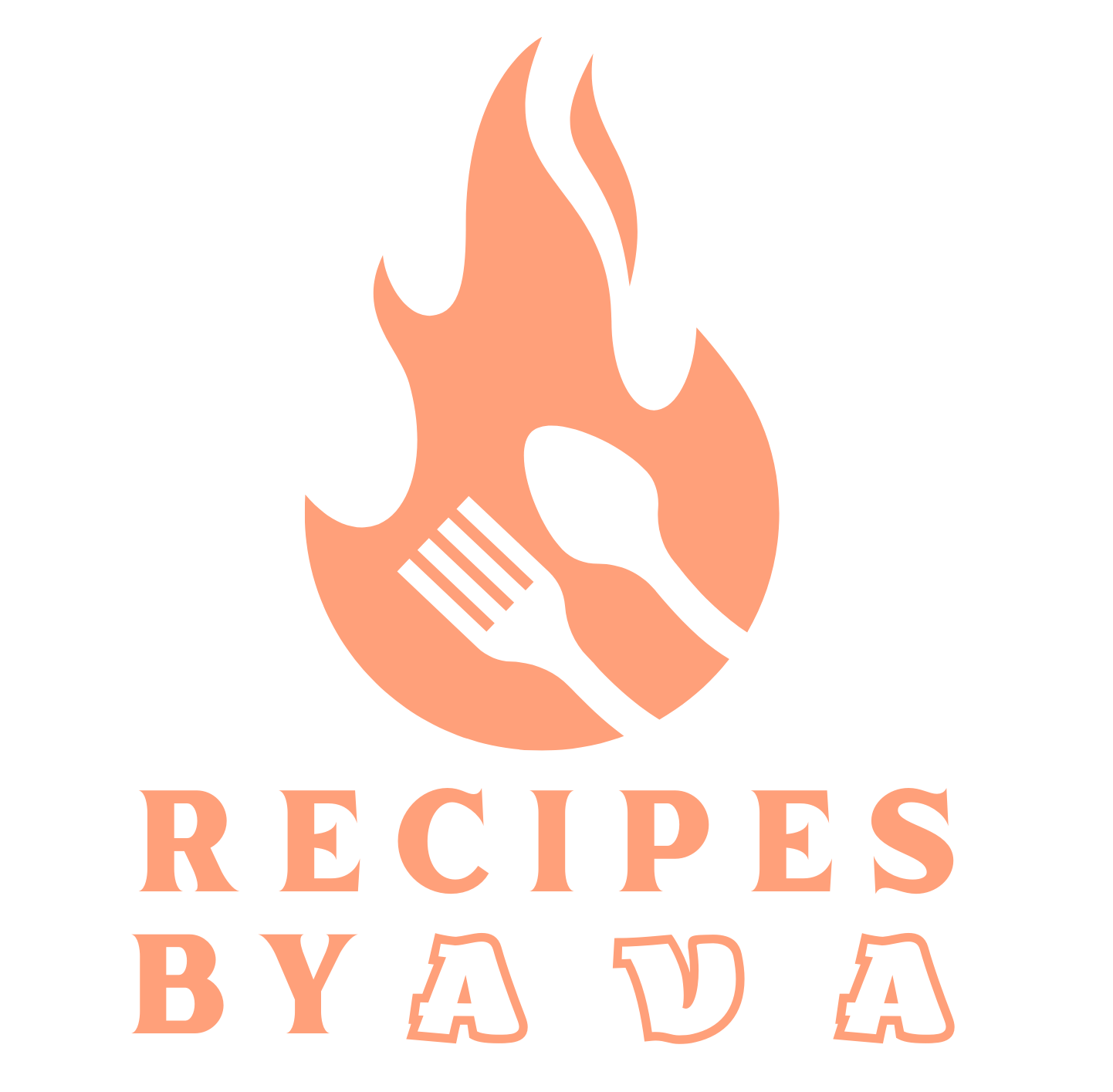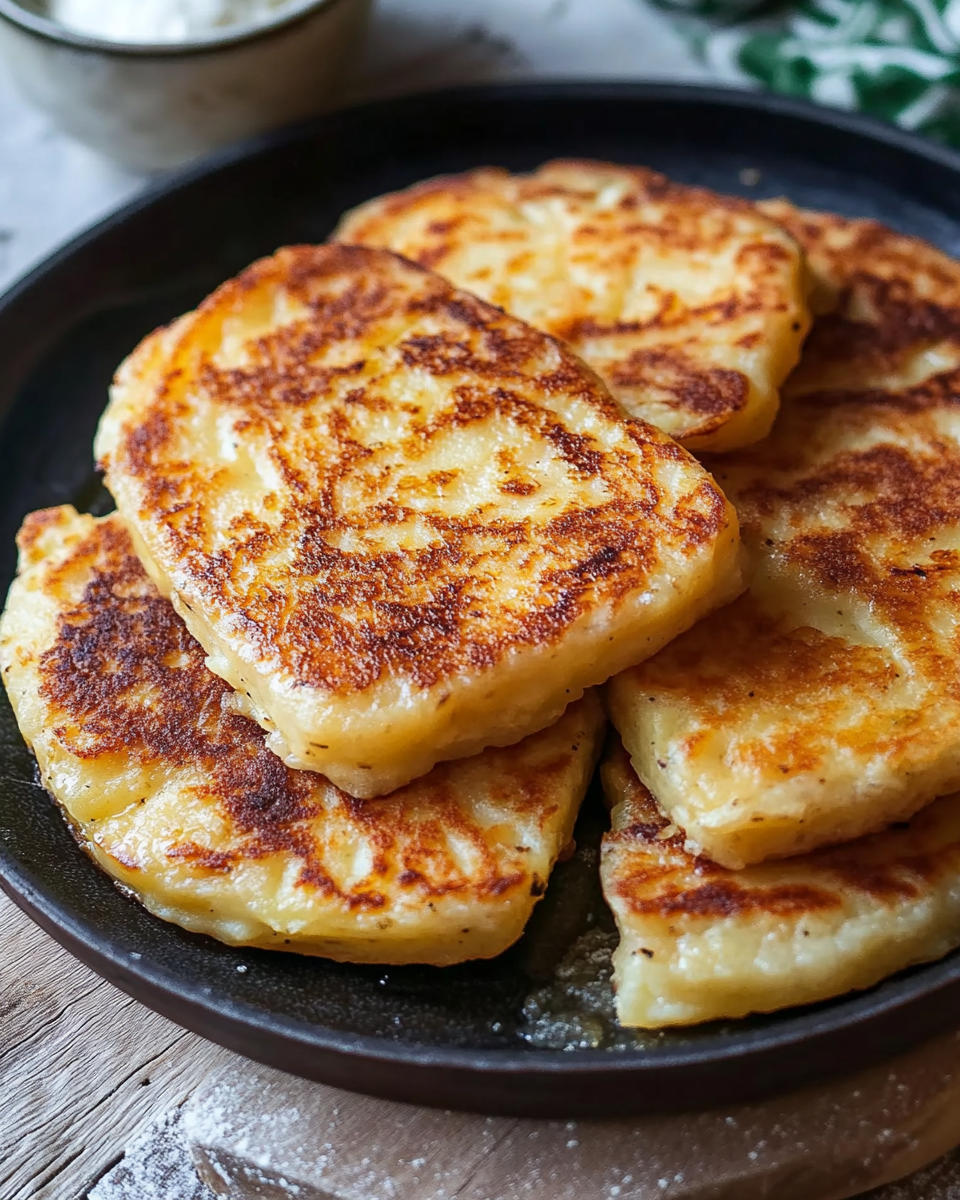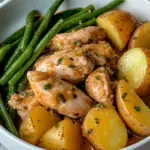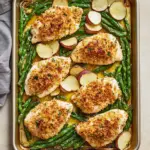The beauty of Irish Potato Farls lies in their simplicity. Made from mashed potatoes, flour, and a bit of butter, these griddle-cooked delights are a staple in Irish breakfasts. With a crisp golden crust and soft, pillowy interior, they pair perfectly with eggs, bacon, or just a generous spread of butter. What makes this dish so special is its humble origins—born from the need to make use of leftover mashed potatoes, yet resulting in something so satisfying and comforting. Whether served as a side dish, a breakfast item, or a quick snack, these farls are a reminder of how simple ingredients can create the most delicious results.
Full recipe:
Ingredients:
- 2 cups (450g) mashed potatoes (cooled)
- 1/2 cup (60g) all-purpose flour
- 1/2 teaspoon salt
- 2 tablespoons unsalted butter (melted)
- 1/2 teaspoon baking powder (optional)
- Butter for frying
Directions:
- In a bowl, combine mashed potatoes, flour, salt, and baking powder (if using). Mix until a soft dough forms.
- Lightly flour a surface and roll out the dough to about 1/4 inch thickness.
- Cut into quarters to form four triangle-shaped farls.
- Heat a pan or griddle over medium heat and melt some butter.
- Cook each farl for about 3-4 minutes per side until golden brown and slightly crispy.
- Serve warm with butter or your favorite toppings.
Prep Time: 10 minutes | Cooking Time: 8 minutes | Total Time: 18 minutes
Kcal: 120 kcal per farl | Servings: 4 farls
Introduction to Irish Potato Farls
Irish Potato Farls are a classic and beloved dish in Irish cuisine. These soft, golden, and slightly crispy griddle breads are made with mashed potatoes, flour, butter, and salt, making them simple yet incredibly delicious. They are often served as part of a traditional Irish breakfast, alongside eggs, bacon, and sausages, but they can also be enjoyed on their own with a slather of butter or a drizzle of honey. What makes Irish Potato Farls so special is their humble origins. They were created as a way to use up leftover mashed potatoes, ensuring that nothing went to waste in traditional Irish households. Over time, this simple recipe became a cherished part of Irish culinary heritage, enjoyed across generations.
A Brief History of Irish Potato Farls
The word “farl” comes from the Scottish word “fardel,” meaning a quarter or a fourth part. This is because traditional farls are rolled into a circular shape and then cut into four equal triangles before cooking. Potatoes have been a staple in Ireland since they were introduced in the 16th century. They quickly became a crucial part of the Irish diet, especially for the lower class, as they were easy to grow and provided essential nutrients. The Irish people developed many potato-based recipes, and farls became one of the most iconic. Historically, Irish Potato Farls were cooked on a griddle or directly on a cast-iron pan over an open fire. This cooking method gave them a slightly crisp exterior while keeping the inside soft and fluffy. They were often made in the morning to be enjoyed fresh or later in the day with tea.
Why This Recipe is the Best
1. Simple and Budget-Friendly Ingredients
- One of the best things about Irish Potato Farls is how few ingredients are needed to make them. The base recipe requires only four ingredients: mashed potatoes, flour, butter, and salt. Most of these are pantry staples, making this dish incredibly economical.
2. Perfect for Using Leftover Mashed Potatoes
- If you’ve ever wondered what to do with leftover mashed potatoes, farls are the perfect solution. Instead of letting leftovers go to waste, you can transform them into a delicious and satisfying dish.
3. Quick and Easy to Make
- Unlike many bread recipes that require yeast and proofing time, Irish Potato Farls can be prepared in minutes. All you need to do is mix the ingredients, roll out the dough, cut it into quarters, and cook it on a hot griddle or frying pan.
4. Versatile and Customizable
- While the traditional recipe is already delicious, Irish Potato Farls can be adapted in various ways to suit different tastes. You can add herbs, cheese, or spices to the dough for a unique flavor twist. Some people even make sweet versions by adding a touch of sugar and cinnamon.
5. Naturally Gluten-Free (With Simple Adjustments)
- For those following a gluten-free diet, Irish Potato Farls can be easily adapted by replacing regular flour with a gluten-free alternative such as oat flour, rice flour, or almond flour.
Variations and Serving Suggestions
1. Classic Irish Breakfast Farls
- Irish Potato Farls are most commonly served as part of a traditional Irish breakfast, which includes eggs, bacon, sausage, black pudding, baked beans, and toast. The farls help soak up the flavors and provide a hearty base for the meal.
2. Cheesy Potato Farls
- For an extra indulgent version, mix grated cheddar cheese into the dough before rolling it out. This adds a delicious melt-in-your-mouth texture and a rich, savory flavor.
3. Herb-Infused Potato Farls
- Adding fresh herbs such as chives, parsley, or rosemary can elevate the flavor of your potato farls. This variation pairs wonderfully with soups and stews.
4. Sweet Cinnamon Sugar Farls
- If you prefer a sweeter version, add a tablespoon of sugar and a sprinkle of cinnamon to the dough. Once cooked, brush with melted butter and sprinkle with extra sugar for a delightful treat.
5. Vegan Potato Farls
- To make a vegan version, substitute the butter with olive oil or vegan butter. This keeps the farls dairy-free while maintaining their signature taste and texture.
The Cultural Significance of Irish Potato Farls
Potato farls are more than just a delicious dish; they represent Irish history, resilience, and resourcefulness. During the Great Famine of the 19th century, potatoes were a primary food source for many Irish families. Despite the hardship, traditional recipes like farls have endured, preserving a piece of Ireland’s culinary past. Today, farls are a beloved comfort food in Ireland and Northern Ireland, often enjoyed during special occasions and family gatherings. Many Irish households still pass down their unique family recipes for potato farls, ensuring the tradition lives on.
Pairing Irish Potato Farls with Other Dishes
Potato farls are incredibly versatile and can be paired with various meals. Here are some delicious ways to enjoy them:
1. With Traditional Irish Stew
- Pair your farls with a warm and hearty bowl of Irish lamb stew. The soft, buttery texture of the farls is perfect for soaking up the rich broth.
2. With Smoked Salmon and Cream Cheese
- For an elegant twist, top warm potato farls with smoked salmon, a dollop of cream cheese, and fresh dill. This makes for a fantastic brunch dish.
3. As a Sandwich Base
- Use potato farls instead of regular bread for a unique and flavorful sandwich. Fill with ham, cheese, and mustard for a simple yet delicious meal.
4. With Honey and Butter
- For a simple and comforting treat, spread warm potato farls with butter and drizzle with honey. This is a great way to enjoy them with tea.
Storage and Reheating Tips
If you have leftovers, you can store Irish Potato Farls in an airtight container in the refrigerator for up to 3 days. To reheat, simply warm them in a dry pan over medium heat for a few minutes until they are soft and slightly crispy again. You can also freeze cooked farls by placing them in a sealed bag and storing them for up to 3 months. When ready to eat, thaw them at room temperature and reheat in a pan or toaster.
Conclusion
Irish Potato Farls are a simple yet incredibly flavorful dish that carries deep cultural significance. Whether served as part of a traditional Irish breakfast or enjoyed as a snack, these golden, crispy griddle cakes bring comfort and nostalgia with every bite. What makes them so special is their versatility—perfect for any time of the day, easily adaptable with different flavors, and an excellent way to repurpose leftover mashed potatoes. If you’ve never tried making Irish Potato Farls at home, now is the perfect time to bring a taste of Ireland into your kitchen. So, why not whip up a batch today and enjoy a dish that has stood the test of time?






